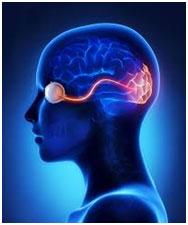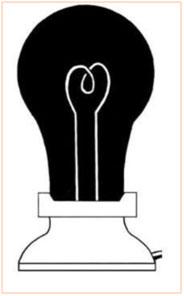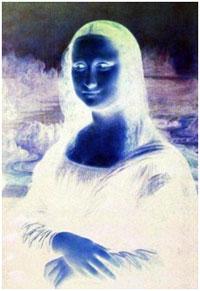 Ever wondered how important ‘Eye-Mind Coordination’ is?
Ever wondered how important ‘Eye-Mind Coordination’ is?
Our eyes’ retina takes in light and converts it into electro-chemical impulses. It cannot process visual detail on its own.
So, the optic nerve, a cable made up of nerve fibers, links the eye to the ‘Visual cortex’of our brain, thus systematically interpreting the visual information in less than a fraction of a millisecond!
 The word ‘illusion’ comes from the Latin word ‘illudere’, meaning ‘to mock.’ Optical illusions occur when our eyes send information to our brain that tricks us into believing something that does not comply with reality. It simply means seeing something that really doesn’t exist or is rather contrasting to the true event by colour, light and patterns to create images that can be misleading to our brains in a mind-blowing way.
The word ‘illusion’ comes from the Latin word ‘illudere’, meaning ‘to mock.’ Optical illusions occur when our eyes send information to our brain that tricks us into believing something that does not comply with reality. It simply means seeing something that really doesn’t exist or is rather contrasting to the true event by colour, light and patterns to create images that can be misleading to our brains in a mind-blowing way.
Check out this famous light bulb illusion on the right. You’ll be surprised by the results! All you have to do is stare at it for a minimum of 25 seconds before immediately looking at a blank white paper or wall. You should see a dazzling white bulb.
 This effect of an image reappearing after exposure to the original image due to photochemical activity in the retina is termed, ‘afterimage’. Our brains decipher negative and positive images in an interesting way, according to investigators and have a connection with psychology.
This effect of an image reappearing after exposure to the original image due to photochemical activity in the retina is termed, ‘afterimage’. Our brains decipher negative and positive images in an interesting way, according to investigators and have a connection with psychology.
 A similar thing happens with this black-and-white drawing of the revolutionary Che Guevara on the left. Our brains reverse the negative image and turn it into a positive. When the black content in the glass bulb disappears (becomes white), an illusionary colour similar to the original background is obtained within the shape: colour is reversed. When you stare at a negative photo, similar to the one of Mona Lisa below, your brain interprets the neuron signals as the opposite colours, creating a full-colour image.
A similar thing happens with this black-and-white drawing of the revolutionary Che Guevara on the left. Our brains reverse the negative image and turn it into a positive. When the black content in the glass bulb disappears (becomes white), an illusionary colour similar to the original background is obtained within the shape: colour is reversed. When you stare at a negative photo, similar to the one of Mona Lisa below, your brain interprets the neuron signals as the opposite colours, creating a full-colour image.
Optic illusions make use of these special processes to trick our minds. Illusions can offer scientists new insights on how vision and the brain work and enable us to see the world around us, proving they’re more than an intriguing entertainment.
So, it’s important that we be aware of good habits for a healthy visual system.
Priscilla Rambukkange (14 years)
Hillwood College, Kandy



 Ever wondered how important ‘Eye-Mind Coordination’ is?
Ever wondered how important ‘Eye-Mind Coordination’ is? The word ‘illusion’ comes from the Latin word ‘illudere’, meaning ‘to mock.’ Optical illusions occur when our eyes send information to our brain that tricks us into believing something that does not comply with reality. It simply means seeing something that really doesn’t exist or is rather contrasting to the true event by colour, light and patterns to create images that can be misleading to our brains in a mind-blowing way.
The word ‘illusion’ comes from the Latin word ‘illudere’, meaning ‘to mock.’ Optical illusions occur when our eyes send information to our brain that tricks us into believing something that does not comply with reality. It simply means seeing something that really doesn’t exist or is rather contrasting to the true event by colour, light and patterns to create images that can be misleading to our brains in a mind-blowing way. This effect of an image reappearing after exposure to the original image due to photochemical activity in the retina is termed, ‘afterimage’. Our brains decipher negative and positive images in an interesting way, according to investigators and have a connection with psychology.
This effect of an image reappearing after exposure to the original image due to photochemical activity in the retina is termed, ‘afterimage’. Our brains decipher negative and positive images in an interesting way, according to investigators and have a connection with psychology. A similar thing happens with this black-and-white drawing of the revolutionary Che Guevara on the left. Our brains reverse the negative image and turn it into a positive. When the black content in the glass bulb disappears (becomes white), an illusionary colour similar to the original background is obtained within the shape: colour is reversed. When you stare at a negative photo, similar to the one of Mona Lisa below, your brain interprets the neuron signals as the opposite colours, creating a full-colour image.
A similar thing happens with this black-and-white drawing of the revolutionary Che Guevara on the left. Our brains reverse the negative image and turn it into a positive. When the black content in the glass bulb disappears (becomes white), an illusionary colour similar to the original background is obtained within the shape: colour is reversed. When you stare at a negative photo, similar to the one of Mona Lisa below, your brain interprets the neuron signals as the opposite colours, creating a full-colour image.